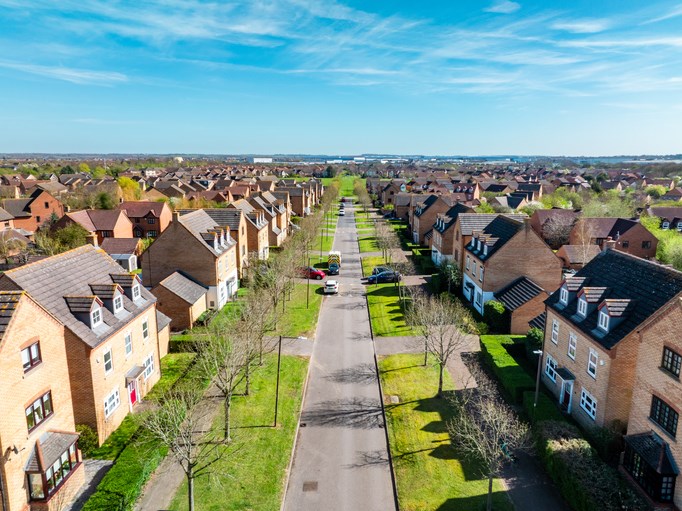RTPI Cymru response to the Welsh Government consultation on 'mandatory quality standards for new homes'
October 2020
Read the RTPI's response below or download it in PDF here.
General Comments
We note that the current Development Quality Requirements 2005 (DQR) is widely considered to be in need of simplification and review. Our recently published Plan the World We Need paper sets out RTPI Cymru’s views on the role of planning in a sustainable, resilient and inclusive recovery in Wales. It highlights the need to “provide clear quality standards in the short term, for long term benefits” and we therefore welcome this consultation and its aims.
The RTPI is one of more than 25 members of the Placemaking Wales Partnership which represents organisations and professions working across the built and natural environment sectors. The Placemaking Wales Charter has been developed by the Partnership. The Charter sets out principles for placemaking in Wales which guide us to think about ‘whole places’ rather than just single developments or land use in isolation. It is vital that all parties understand that housing developments, even single houses have a part to play in placemaking.
Question 01: What are your general views on the proposed new policy with regard to the issues itemised within the above Summary:
We note that there are inconsistencies in the application of the DQR and it is welcomed that this consultation attempts to provide clarification, however there appears to be much that is unclear and ambiguous and could be open to different interpretations by the various stakeholders such as Local Authorities, Registered Social Landlords, developers etc. in the proposed new policy.
The Beautiful Homes and Spaces document would benefit from a clear statement setting out its vision, aims and objectives along with the intended audience.
Accessible homes and/or homes that can be adapted are critical going forward to prevent retrofitting and the costs associated with this. It is recognised that house sizes are becoming too small and it is welcomed that minimum sizes are being considered, but this also needs to be weighed against land availability and also what is being delivered via the market. Open discussion is required across the sectors to achieve the range, type and size of homes needed in an area.
More consideration needs to be given to design quality, sustainability, innovation, modern methods of construction and carbon reduction etc in the building of homes generally and in particular the delivery of affordable homes under Section 106 (S106) due to inconsistencies.
Question 02: What are your general views on the proposed new policy with regard to the “evidence for change” itemised within the above Summary:
To help with inconsistencies, the final document needs to ensure that at the outset it has a clear purpose and weight, setting out clearly where it sits in the framework of housing and planning documents.
Question 03: Do you think there are benefits to the proposed new policy:
We welcome Welsh Government seeking to implement a minimum functional quality standard and giving consideration to how homes and their environments are designed. As stated in our above mentioned paper, Plan the World We Need, we believe that this will have longer term benefits.
Question 04: Do you think there are any dis-benefits to the proposed new policy:
There are many potential ambiguities within the proposed policy document, which could impact on negotiations and result in inconsistency in the application of the standards, such as in S106 negotiations. For example, the language in the detailed meanings is very ambiguous. “2a – rooms are large enough to take all the furniture occupants can reasonably be expected to need” and “3f rear gardens are safe for small children to play in….easy to maintain”. This language is open for interpretation and interpretation will change between individuals and sectors.
The policy document needs to clearly set out its vision with aims and objectives, where the policy sits in the planning / housing framework, who the audience is and who the document applies to - Housing Associations/Authorities, Planning Authorities, developers etc. The weight of this policy should also be clear in the decision making process.
Requirement 1, “Homes should be of high quality, innovative and sustainable” sets a strong ambition and aspiration for the future of housing, which is welcomed, however, the sub text accompanying this and the other requirements are broad and could be open to interpretation. The policy wording needs to be clear, informative, enforceable and concise.
In particular, we note the references to car parking provision at “3g) Car parking provision is conveniently situated and reflects the location and anticipated levels of car ownership.” While car parking provision should be in line with the Council’s parking guidelines, it is vital that we embrace active travel within our policy documents and we would hope to see active travel requirements feature.
Question 05: What changes (if any) do you think are needed to the proposed new policy? Please explain and provide evidence for your views:
Further clarity is needed. The detailed meanings need to be clear, informative, enforceable and concise. The policy also needs to set out its vision, aims, audience and weigh in the process.
Question 06: Do you agree or disagree that it is important for all affordable homes delivered through section 106 agreements and planning conditions to meet the proposed quality standards for new homes? If you disagree, please tell us why.
It makes sense that all affordable homes delivered through S106 agreements and planning conditions meet the proposed quality standards for new homes to prevent future adaptations and costs to RSLs / the Council and we welcome this. This will also assist Local Planning Authorities build it into their own Local Development Plans. Although we do recognise there is a balance to be struck in terms of viability and delivery.
A significant concern is the ambiguity of the wording and the impact this will have on negotiations, for example Policy 3 - “staircases are designed to minimise the chance of accidents”; “kitchens and bathrooms are functional and help reduce the risk of accident”, “rooms are large enough to take all the furniture occupants can reasonably be expected to need”.
Question 07: What is your opinion on the intention to adopt the proposed new policy for all housing irrespective of tenure. Please explain and provide evidence for your views:
We note the Review of Affordable Housing Supply (2019) recommended Welsh Government to set a longer term goal of 2025 at the latest, to have the same standards for all homes irrespective of tenure and we support this aim. This is likely to affect the smallest of homes and will be particularly valuable in setting standards for conversions of existing buildings. This would ensure that homes fit basic living standards. We accept that consideration needs to be given to the impact of this on the price of that home, particularly in high market areas.
Question 08: What is your opinion of the proposed minimum space standard. Please explain and provide evidence for your views:
We support the aims of the minimum space standard, and call for an open discussion across the sectors and on the impact upon land availability, viability, number of units achieved etc.
Question 09: With the exception of the Lifetime Homes requirements, the proposed new policy is not prescriptive in relation to inclusivity and notably such matters as, disability, ethnicity, gender, sexual orientation, age, religion, human rights or children’s rights. Do you consider that the proposed new policy is sufficiently inclusive or not. Please explain and provide evidence for your views:
We have no comment and regard this factor to be picked up by the operation of RSLs and Councils and the methodology for housing lists and allocations.
Question 10: We are proposing to change the name of DQR to “Beautiful Homes and Spaces” (BHS). What is your opinion of the proposed name change and do you have an alternative suggestion:
It is welcomed that Welsh Government aspire to create ‘beautiful’ homes, and the word ‘beautiful’ elevates the ambition, although we appreciate that ‘beautiful’ is a subjective term.
Question 11: Subject to the outcome of the consultation on changes to the Building Regulations Part L (conservation of fuel and power) and Part F (overheating), new regulations will come into force. What is your opinion of the potential early introduction of the conservation of fuel and power and overheating regulations for new affordable housing in advance of any building regulation transitional arrangements?
The principle for saving energy and reducing costs and hence addressing fuel poverty is important. Any development should now be addressing these factors and we welcome an early introduction. There are many examples of affordable homes already constructing to higher standards; using a fabric first approach at the design stage aids in reducing any additional construction costs.
Question 12: What is your opinion on the potential introduction of a requirement that all new affordable housing should meet EPC A (SAP 92).
No comment
Question 13: We have asked a number of questions. We would welcome any other views you may have about the proposed new policy and the proposals for implementation:
Further information is required regarding the need to demonstrate compliance with any new policy requirement. Would the developer be required to demonstrate this as part of the submission?
We note that LPAs are monitored for the number of units delivered via their annual monitoring targets and Welsh Government indicators. We support the attempts that this policy makes to address quality.
The RTPI will be publishing research, supported by the Welsh Government, on the 8th November on Measuring Planning Outcomes. This research considers how local authorities can measure the outcomes of planning. This means going beyond simple metrics such as the speed of processing planning applications and the number of housing units delivered. It will instead promote the assessment of planning in terms of placemaking aspirations and social, economic, cultural and environmental value, in order to track and demonstrate the impact of planning.


